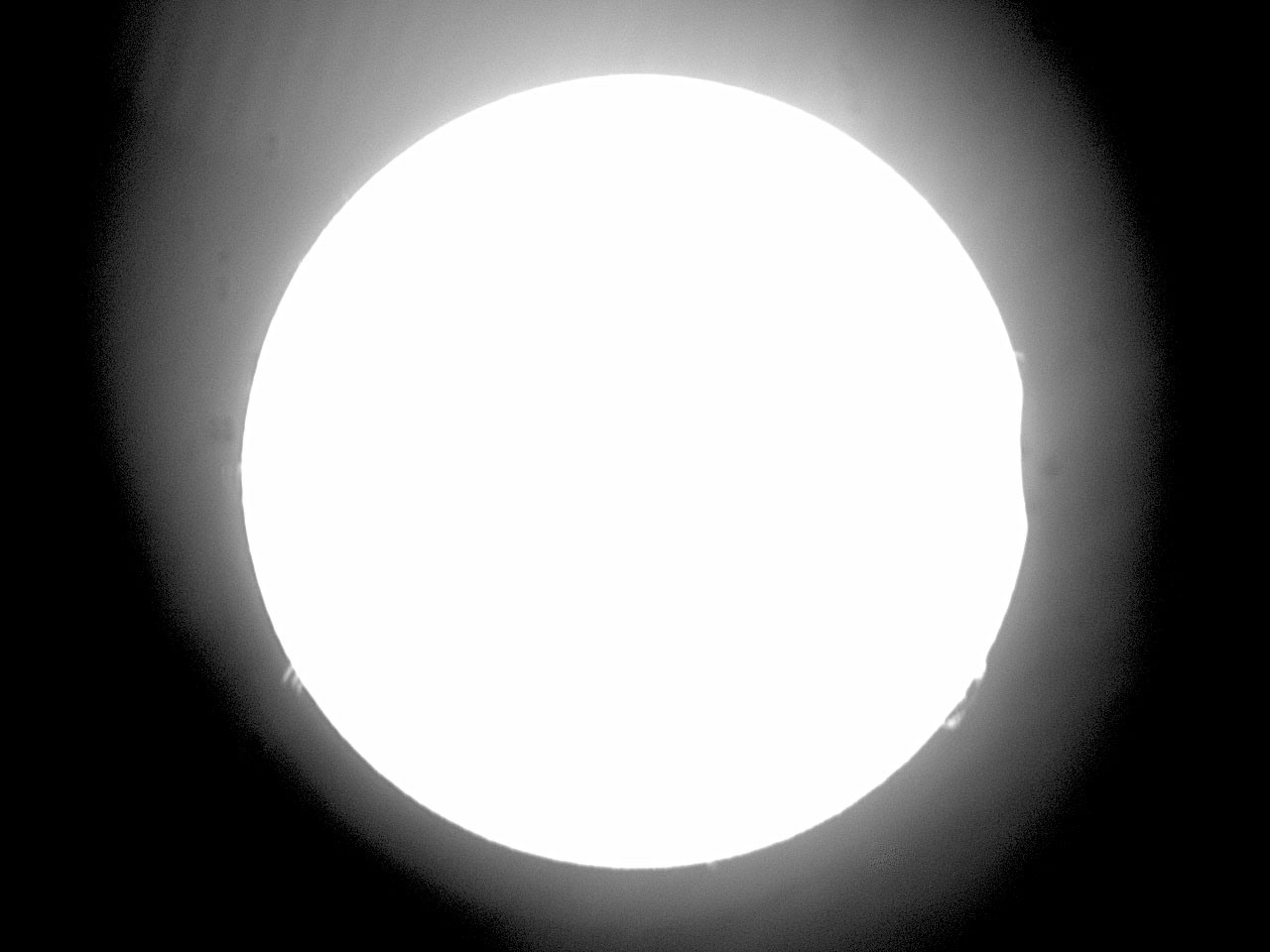
Less
than a week before the annular eclipse, Dean Kelly sent me an
email asking whether
I would be interested in accompanying him to the center line
passing through Round Mountain, Califronia.
This
is a ~350 mile drive, and the plan was to leave early on the
morning of the eclipse
and arrive at the Hill Country Medical Center about an hour
before first contact.
Dean was already in contact with the people there, and they were
happy to help us.
Dean
has a Coronado PST, and we decided it would be the best available
instrument for taking
images during the eclipse. I borrowed it and began experimenting
to determine the best
image sensor and mounting to use. My DMK 41 video camera and an
old "no-name"
equatorial mount I've had for years seemed to work well, and
that's how we took the
images that follow below....

05-12-36 PDT, shortly after first contact.
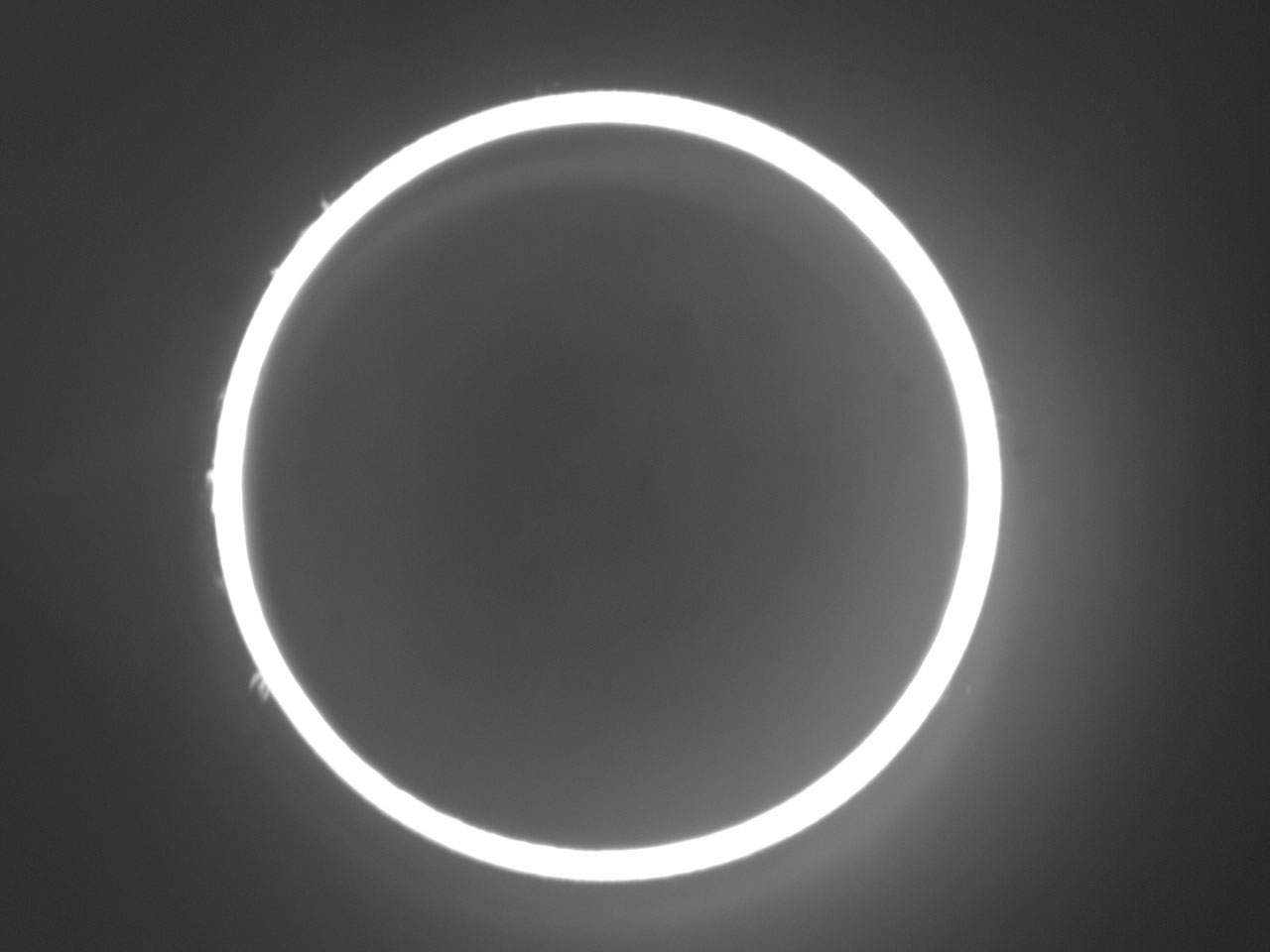
Mid-Eclipse: 18:28:37 PDT. The photosphere is grossly overexposed to reveal prominences on the solar limb.
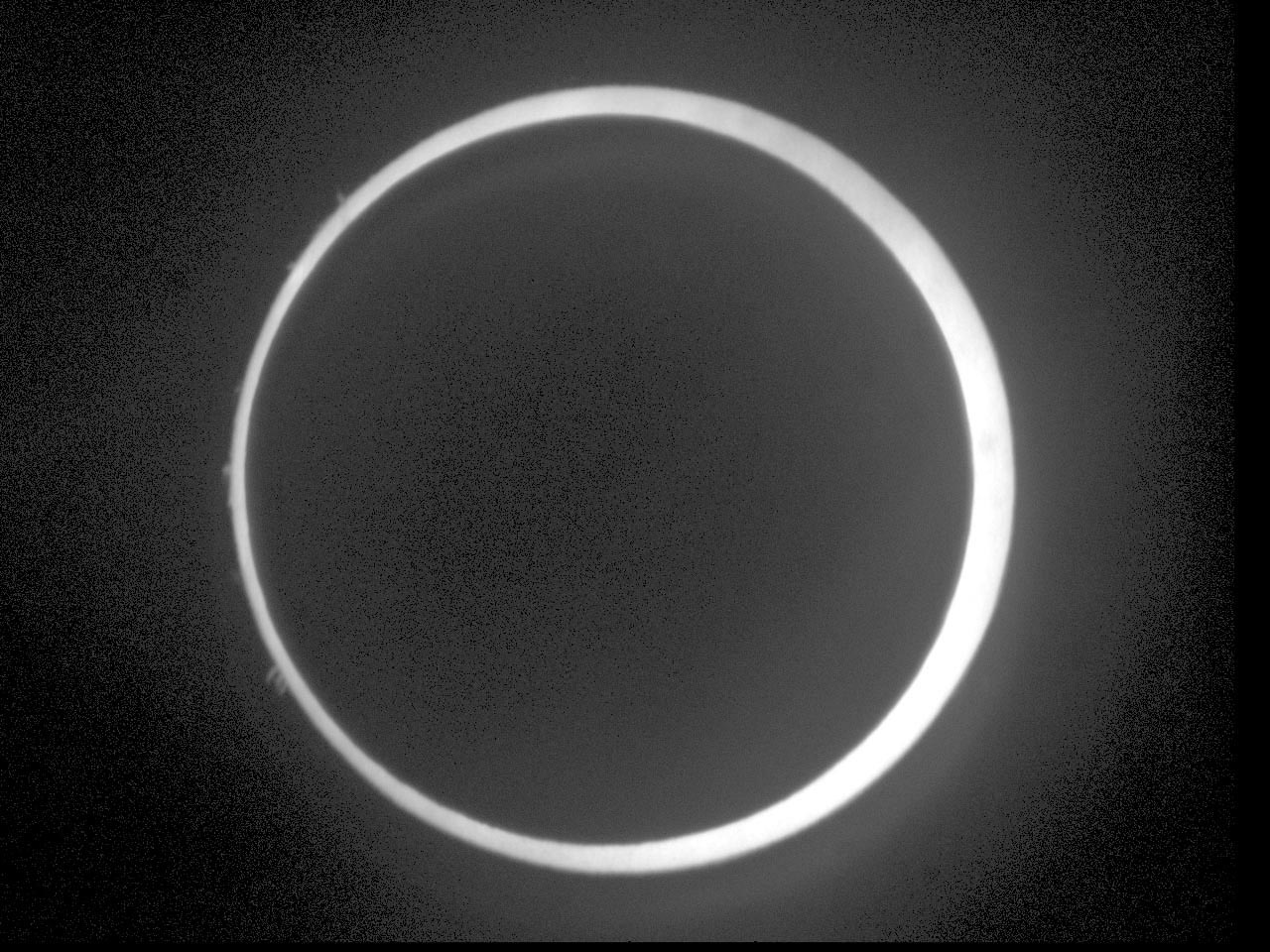
Third Contact minus 59 seconds: 18-29-47 PDT.
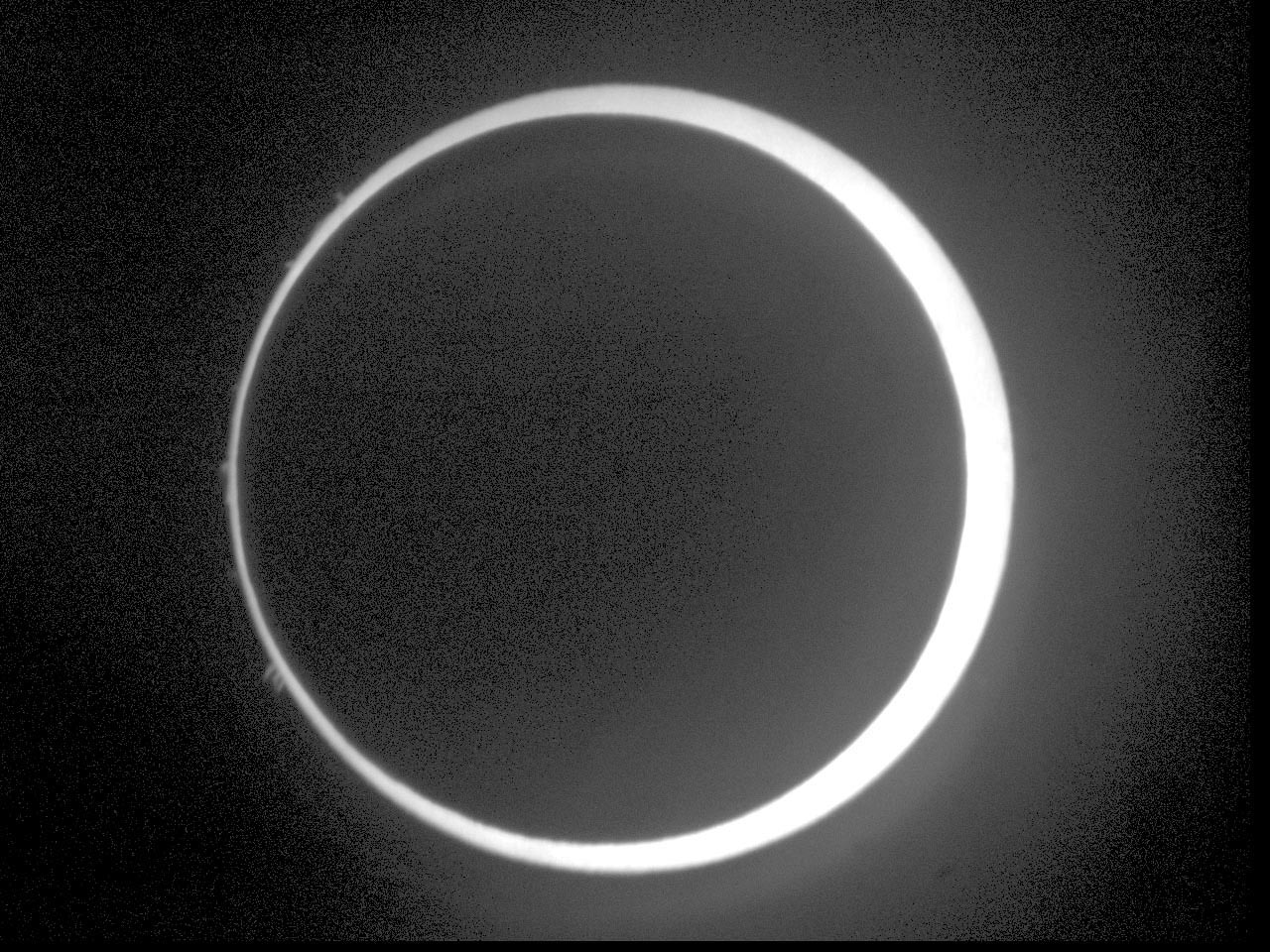
Third Contact minus 30 seconds: 18-30-17 PDT.
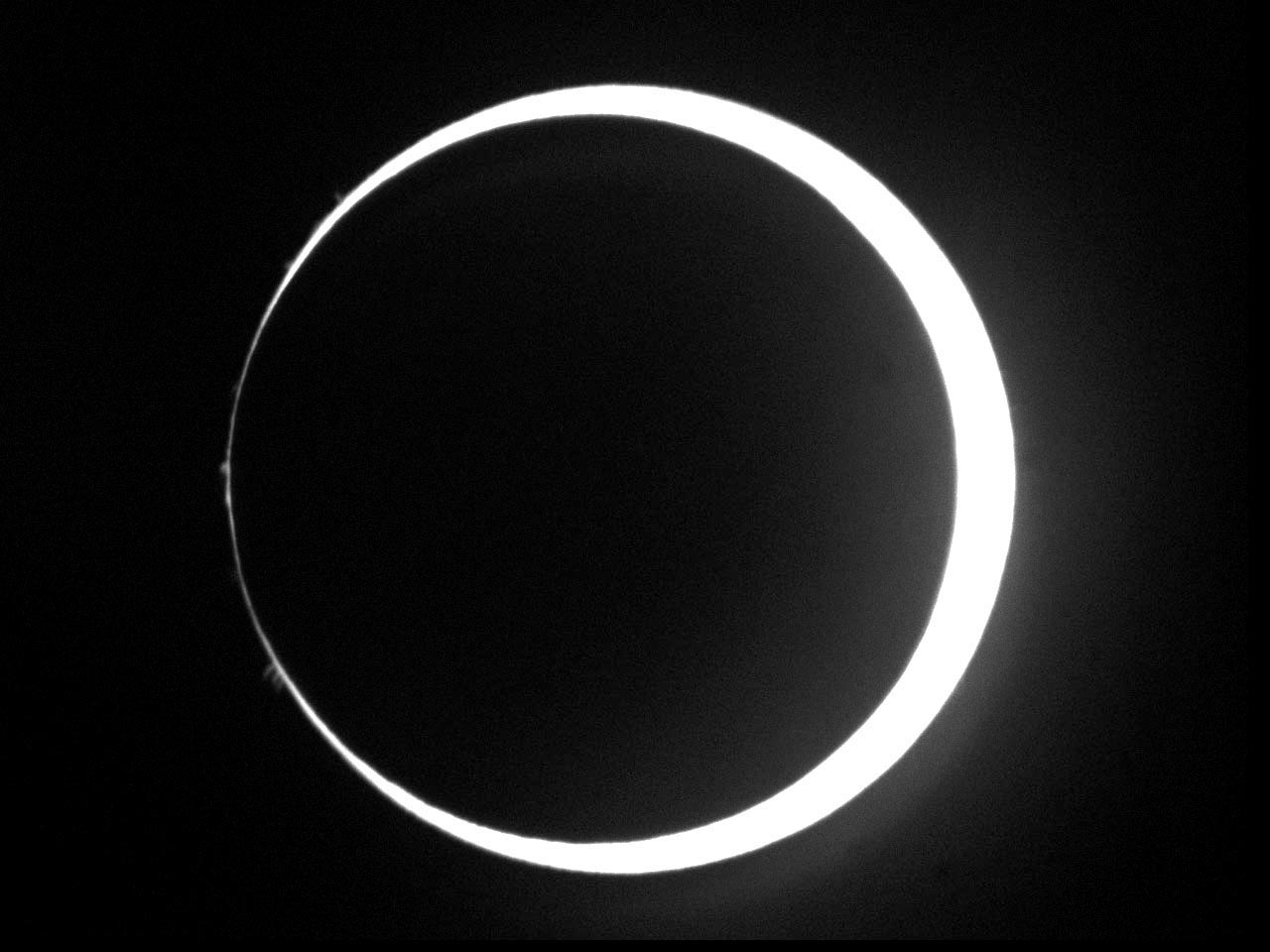
The Moment of Third Contact: 18-30-48 PDT. Irregularities on the lunar limb let through varying amounts of sunlight.
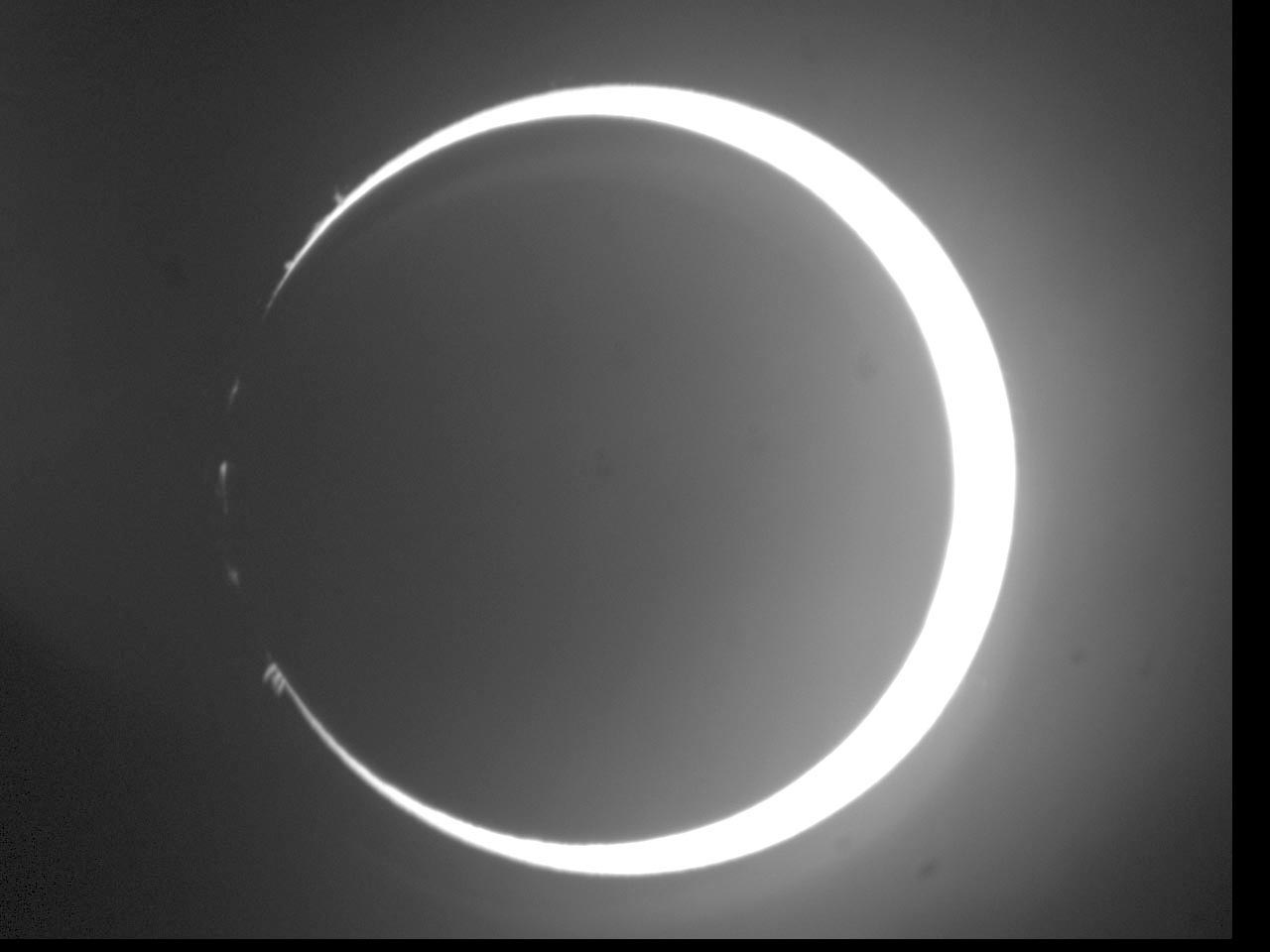
Third contact plus 30 seconds: PDT. Photosphere covered but prominences still visible.
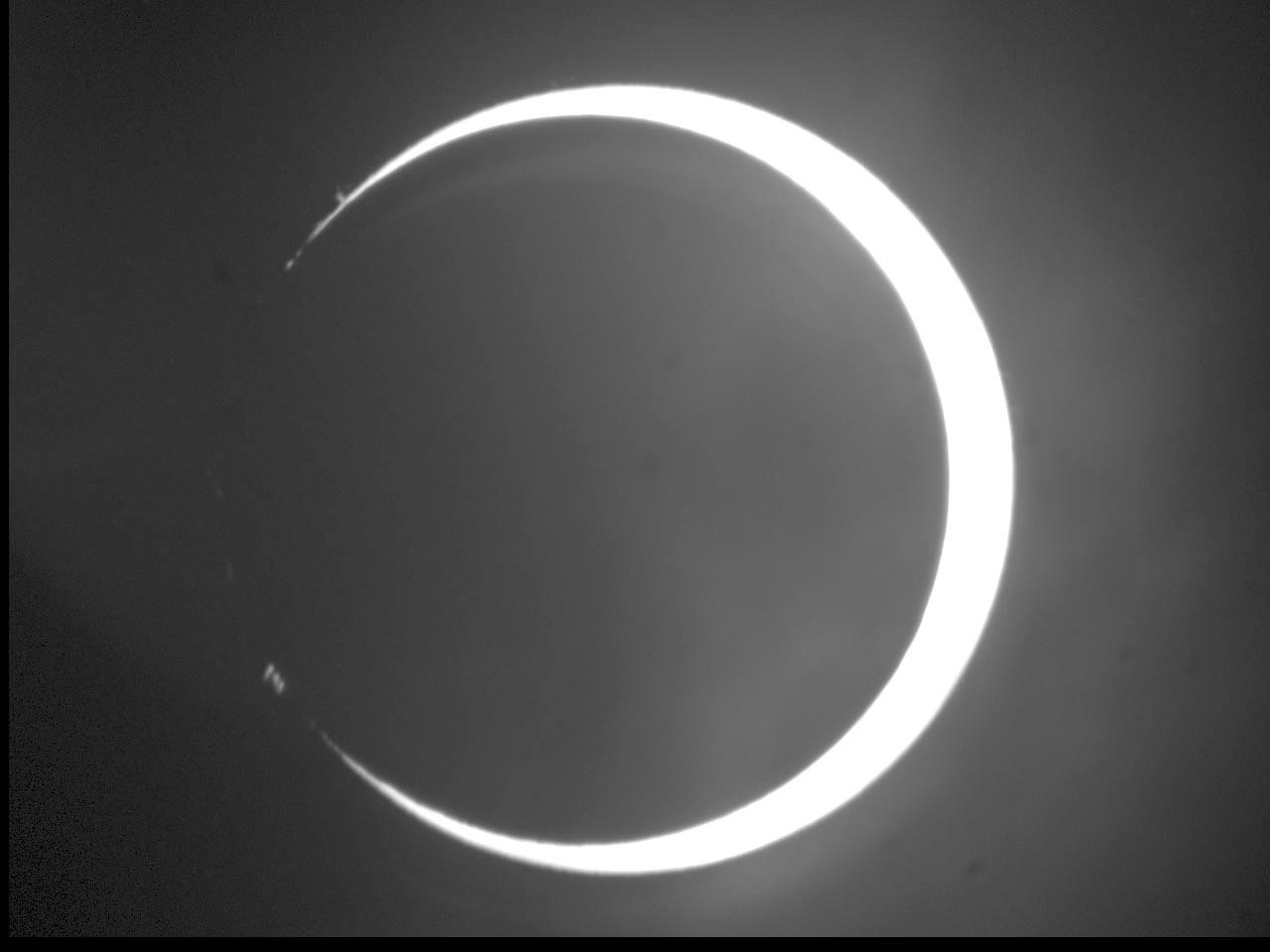
Third contact plus 60 seconds: 18-31-47 PDT. Final traces of prominences about to be covered.
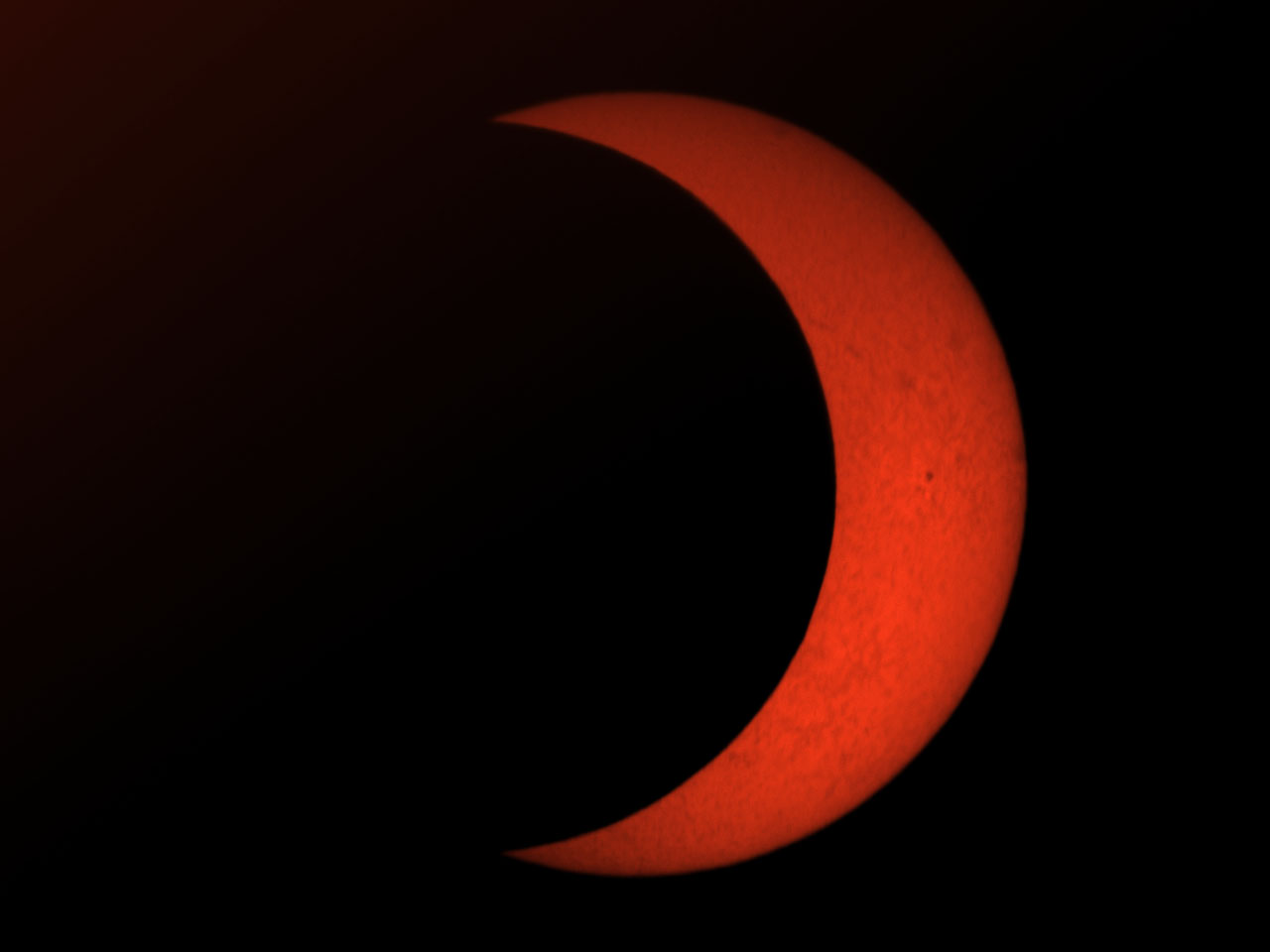
Emerging solar disk, 18-43-41 PDT.
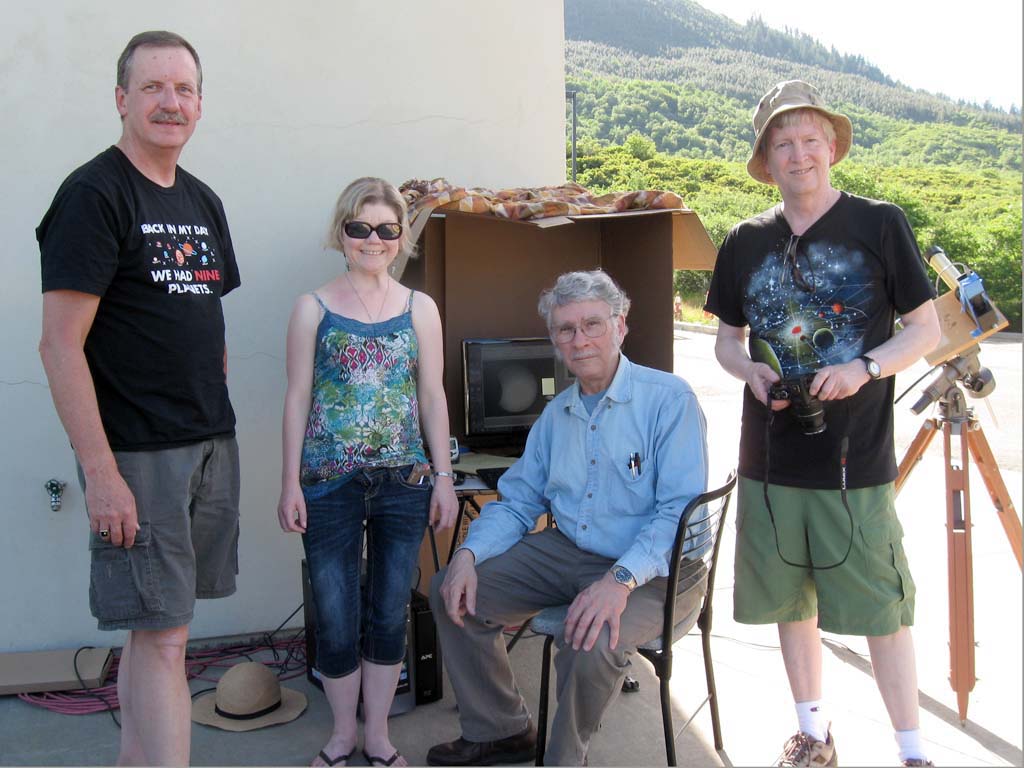
Members of the
Night Sky 45 astronomy club, L to R: Dean Kelly, Lyndsey Beeler,
Richard Berry, Alan Beeler.
Alan and Lyndsey met us at the eclipse site; in fact, they
arrived at the moment of first contact.
My imaging setup
included a full-size desktop computer, 21-inch monitor,
uninterruptable power
supply, table, chair, and cardboard light shied.
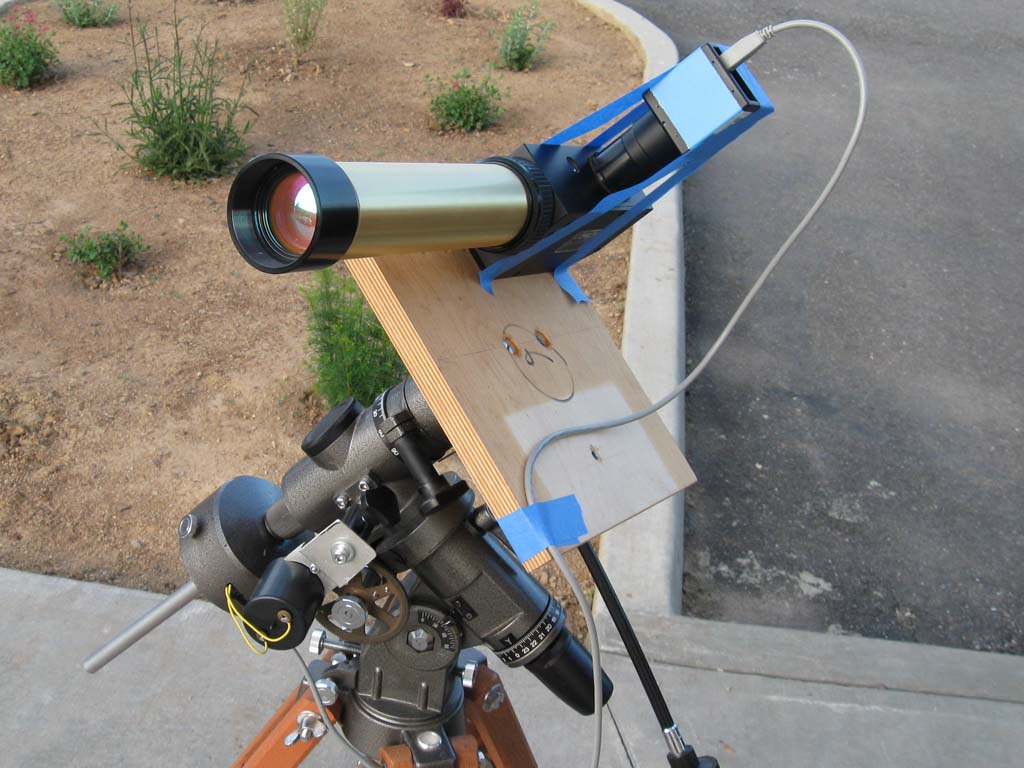
Dean's Coronado PST
H-alpha solar telescope, with my DMK 41 video camera taped onto
the eyepiece holder.
The aperture of the PST is only 40 mm; it performed amazingly
well. The DMK 41 camera is a USB
powered industrial-grade 8-bit 1280 x 960-pixel video camera able
to image at 15 frames per second.
The mounting is
driven by a 4.5-volt DC motor using a 12-volt battery and a
rheostat. This was, unfortunately,
a last-minute kludge that made controlling the speed of the clock
drive quite difficult. However, for any
extended observation, any clock drive is better than no clock
drive!
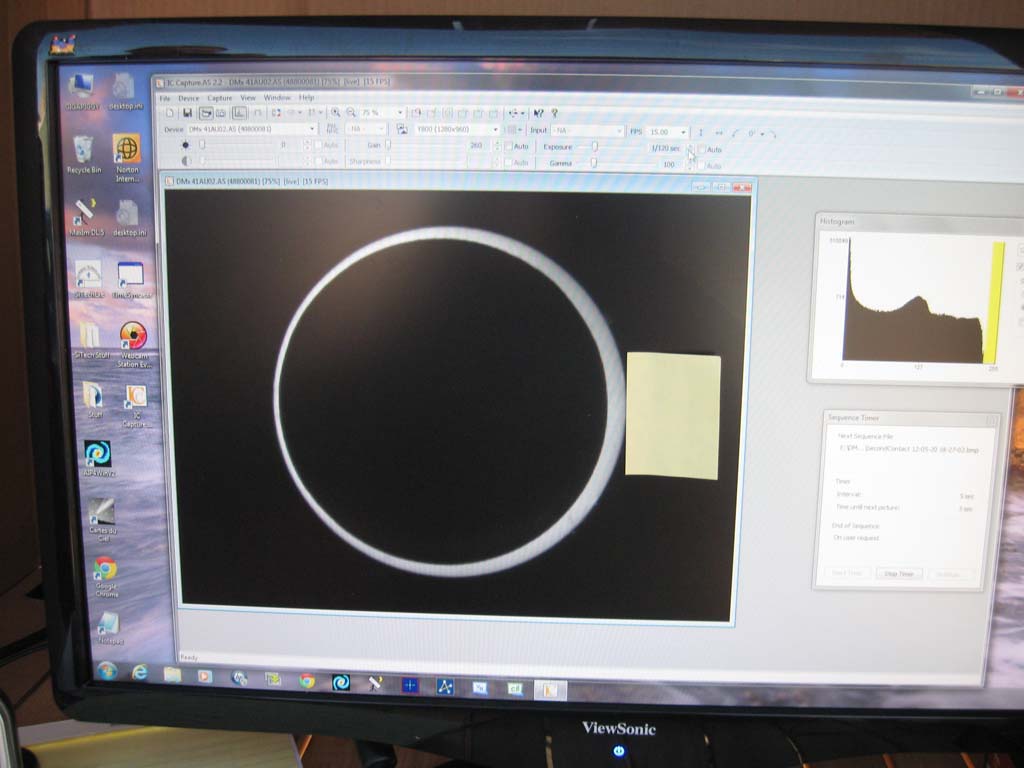
This is the image I saw. Up to and through annularity, I was recording one frame every five seconds.
The Post-It note on
the monitor enabled me maintain the Sun's position by fiddling
with the speed of the motor on the mounting.
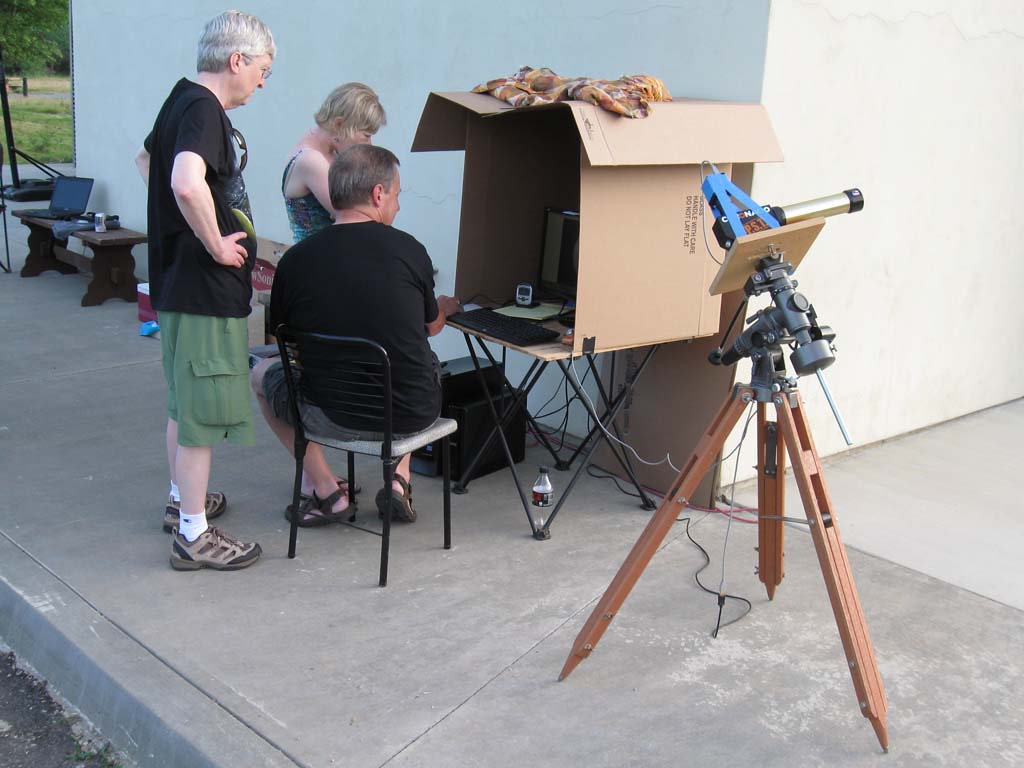
A side view of the
observing/imaging set up. We were located at the corner of
the Teen Center at Hill Country Medical in Round Mountain, CA.
Actually, something
like 30 people showed up for the eclipse, including people Dean
and I met
on I-5 as we drove south. It was a real "star"-party
complete with "Ring of Fire" and
a deeply resonant sounding bowl played like a wineglass at the
time of annularity.
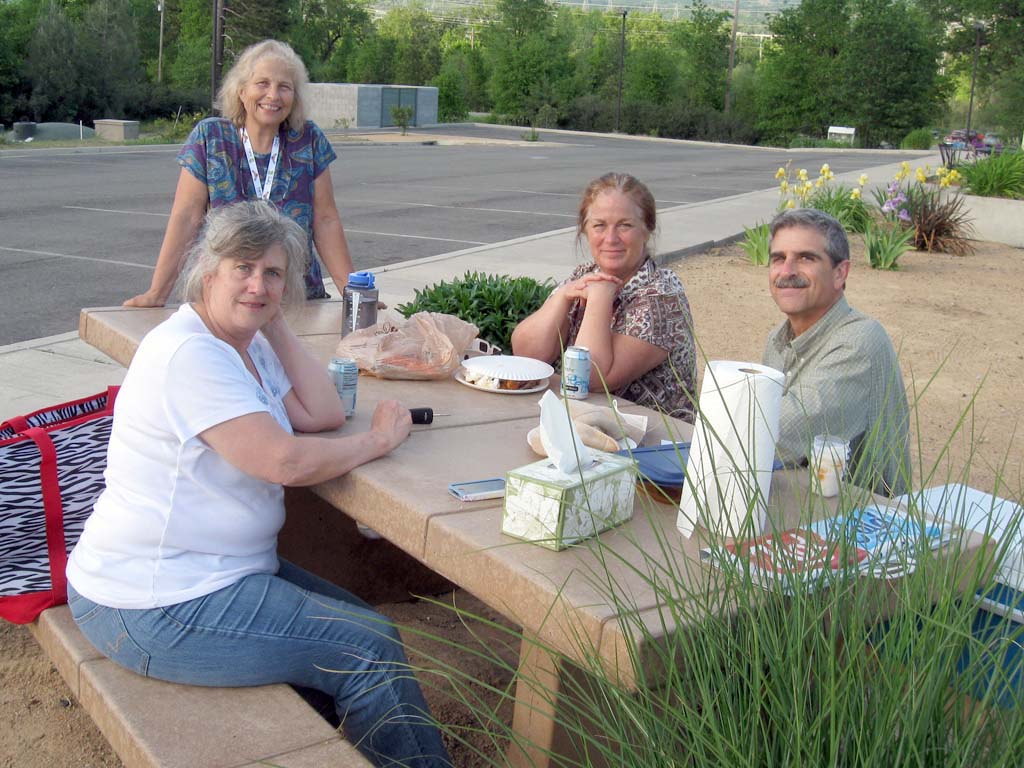
These are the
helpful folks at Hill Contry Medical. They provided us with
parking spaces,
electric power, water, washrooms, an Internet connection, and a
friendly welcome!
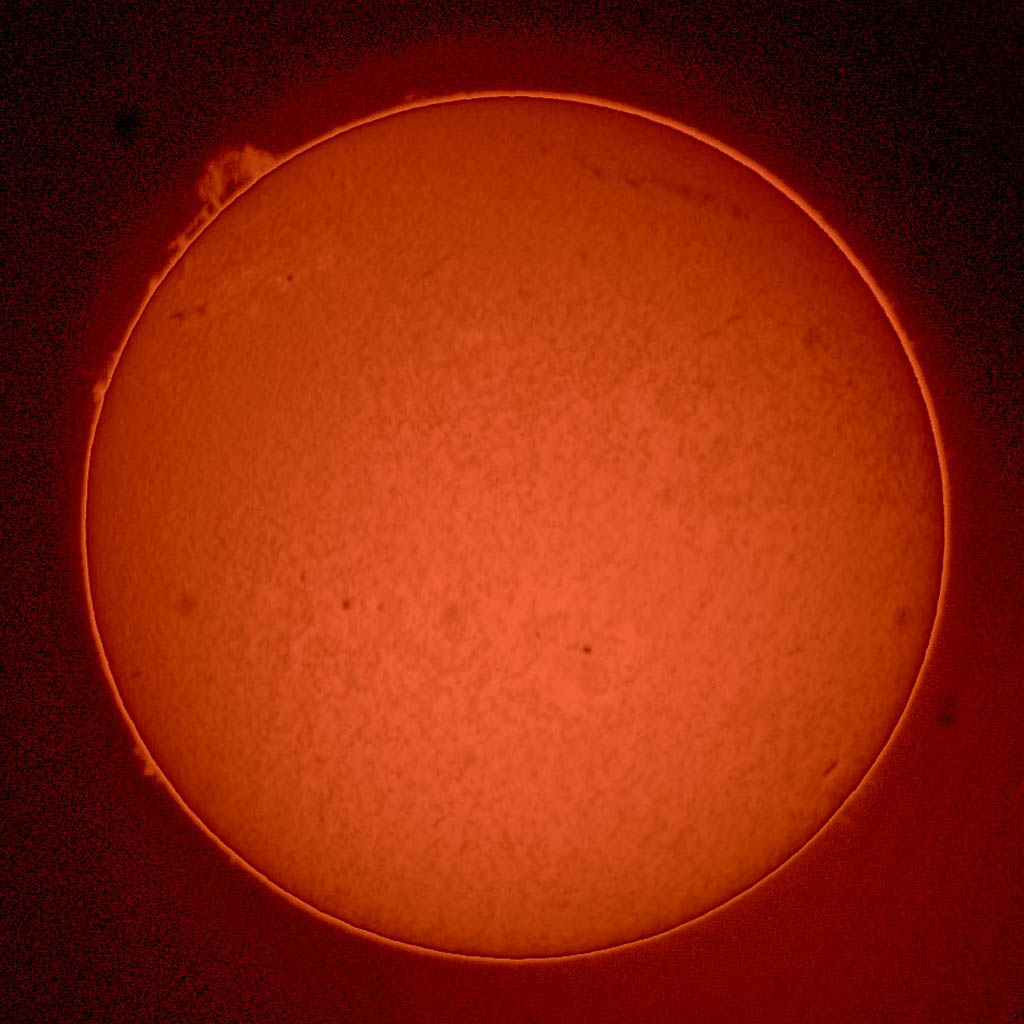
I took this test
image with the PST and DMK 41 two days before the eclipse. It's a
single
exposure processed to show both the disk and prominences.
Return to Richard Berry's Home Page